MARIANI’S
Virtual Gourmet
August 6, 2017
NEWSLETTER
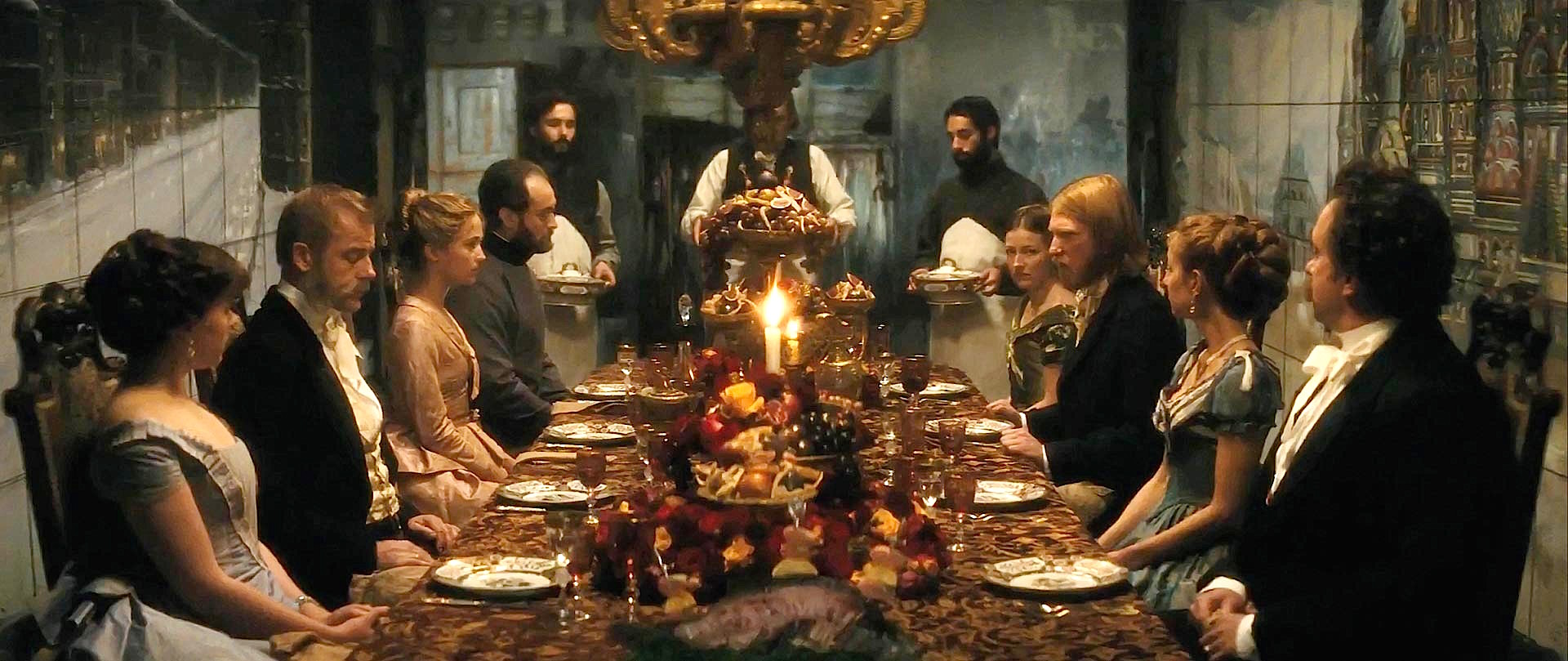
❖❖❖
IN THIS ISSUE
ANGUILLA, Part Two
By John Mariani
NEW YORK CORNER
MARLOW BISTRO
By John Mariani
NOTES FROM THE WINE CELLAR
WHAT I'M DRINKING NOW
By John Mariani
❖❖❖
ANGUILLA, Part Two
By John Mariani
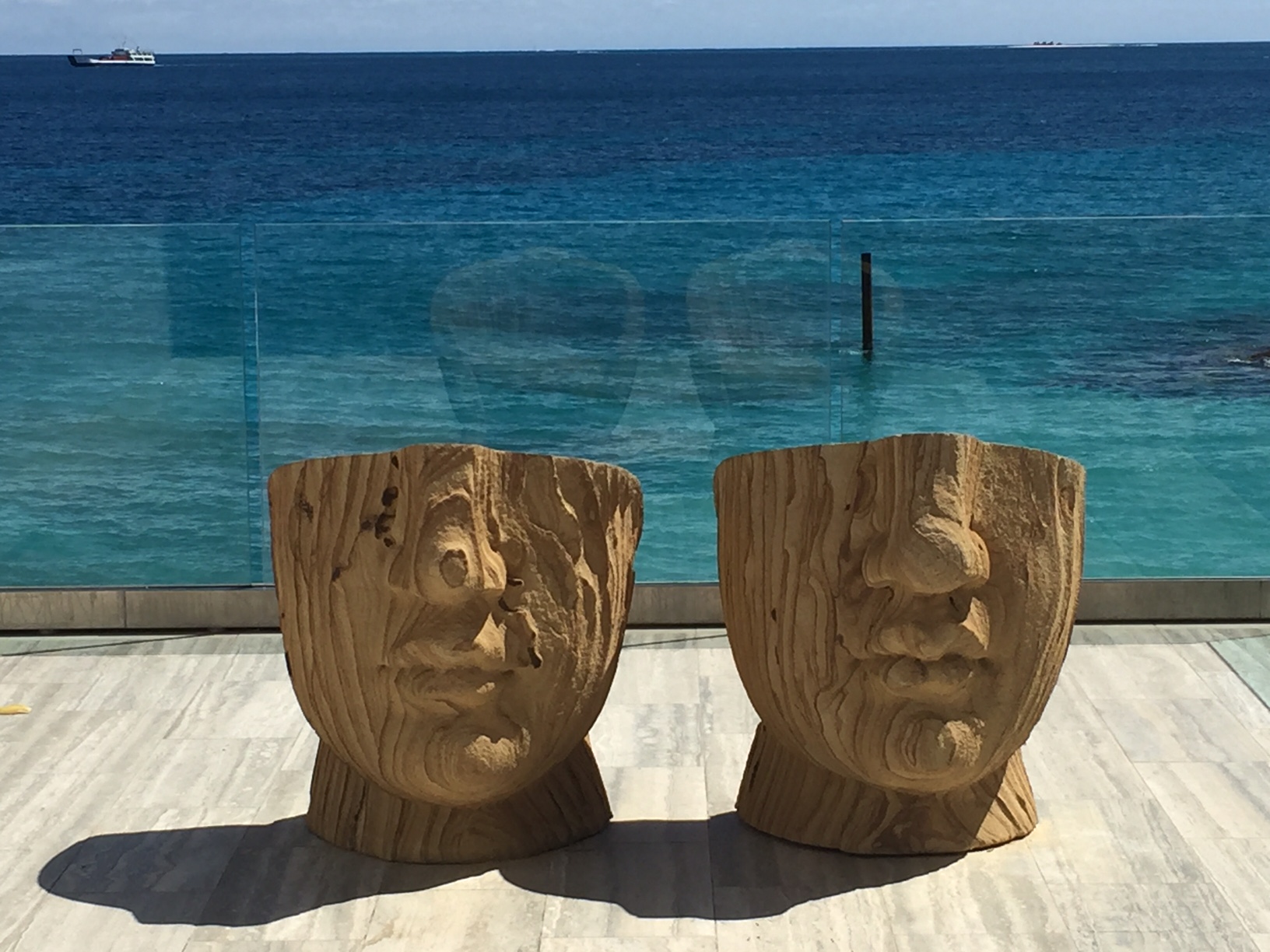
Four Seasons Anguilla Hotel
As
much as any island its size in the Caribbean—35
square miles—Anguilla has its fair share of
high-end resorts, not least the Four Seasons,
Mallihouhana and CusinArt.
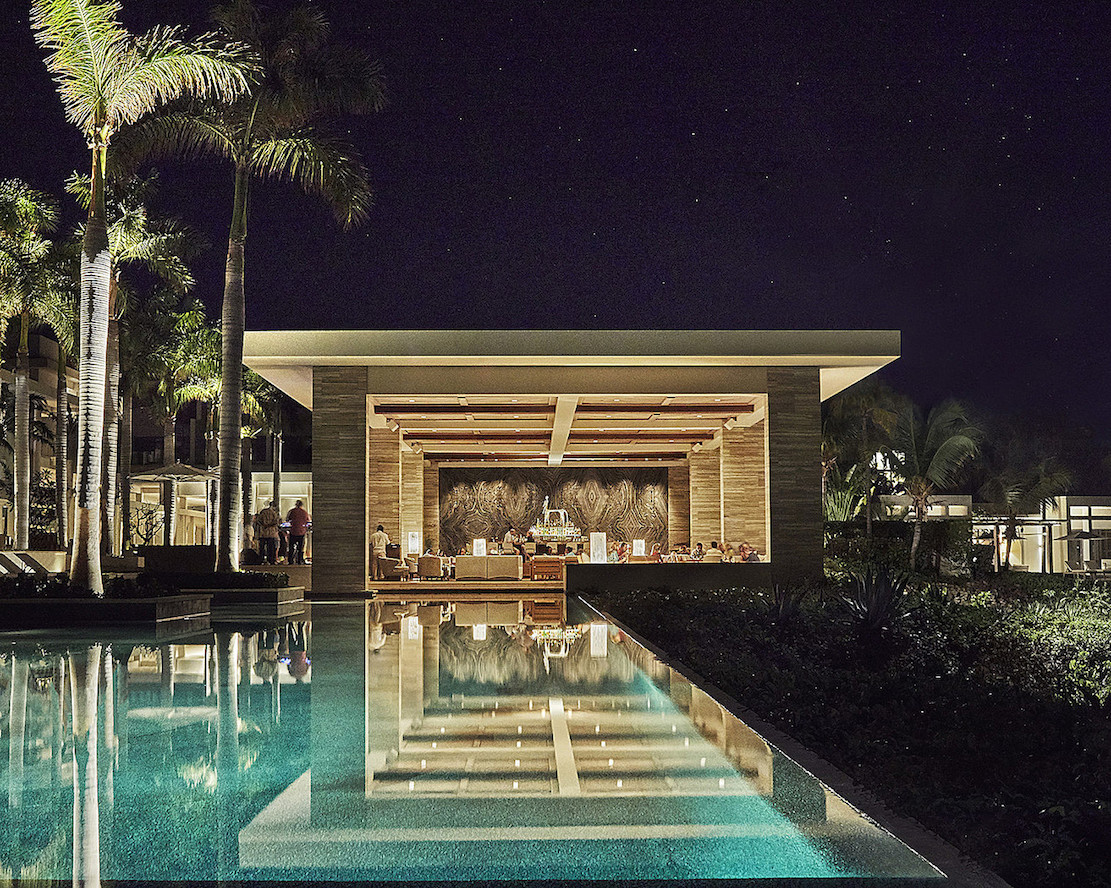 The Four
Seasons, with 181 luxury accommodations set on 35
acres of beachfront on Barnes Bay and Meads Bay,
was last year taken over from what had been the
Viceroy, and the Toronto-based hotel group has
carefully been renovating the property while
keeping the dramatic, solid modernism of the
original design of low-lying buildings banked away
from the sea. The manicured and angular spread of
the property has the cast of a futuristic world
afloat in a sea of serenity, right down to the
great carved heads (above) set as totemic
protectors.
The Four
Seasons, with 181 luxury accommodations set on 35
acres of beachfront on Barnes Bay and Meads Bay,
was last year taken over from what had been the
Viceroy, and the Toronto-based hotel group has
carefully been renovating the property while
keeping the dramatic, solid modernism of the
original design of low-lying buildings banked away
from the sea. The manicured and angular spread of
the property has the cast of a futuristic world
afloat in a sea of serenity, right down to the
great carved heads (above) set as totemic
protectors.
Tall glass
walls and thick beige and white travertine marble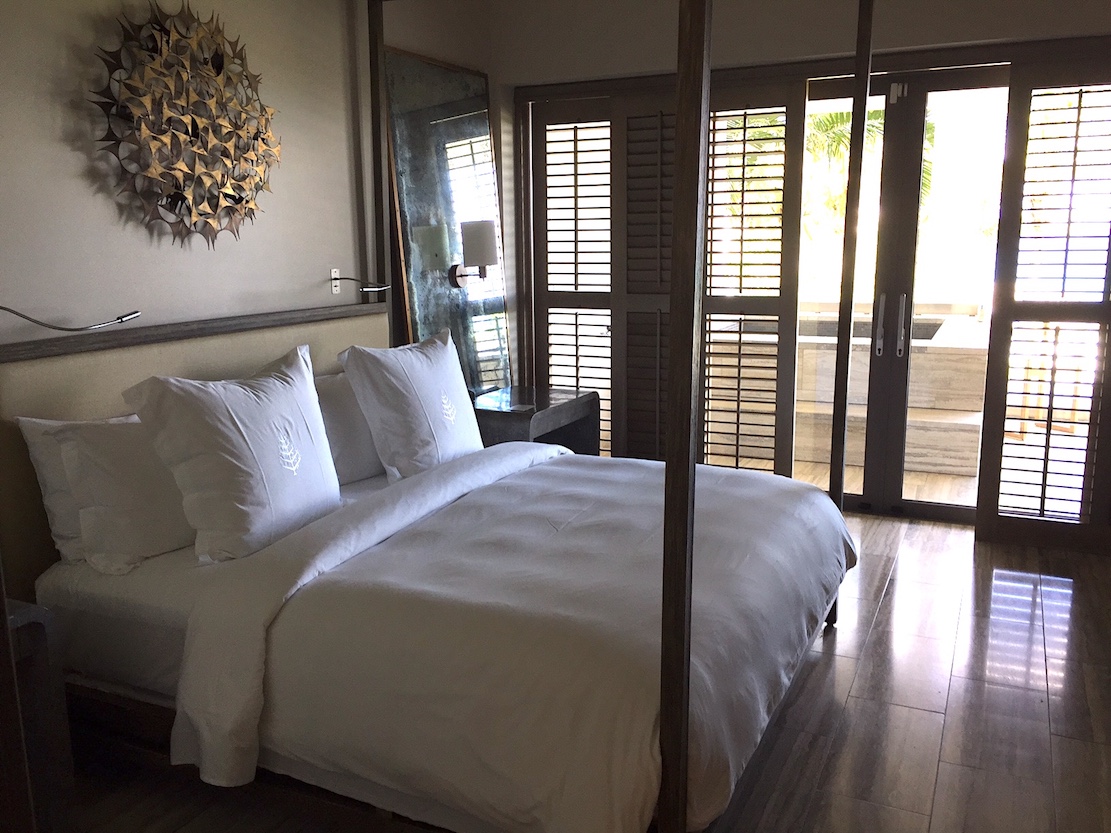 columns play with the
shifting light, while the extensive greenery
provides slow-moving shade. Rows of palm trees
sway drowsily in the warm, omnipresent trade winds
above sun-flecked infinity pools. The outside
off-white colors are echoed in the spacious rooms
and large marble bathrooms. With considerable
devotion to the environment, the resort has an
on-site reverse osmosis plant to produce fresh
“spring” water for the resort that is then recycled
to irrigate the native flora.
columns play with the
shifting light, while the extensive greenery
provides slow-moving shade. Rows of palm trees
sway drowsily in the warm, omnipresent trade winds
above sun-flecked infinity pools. The outside
off-white colors are echoed in the spacious rooms
and large marble bathrooms. With considerable
devotion to the environment, the resort has an
on-site reverse osmosis plant to produce fresh
“spring” water for the resort that is then recycled
to irrigate the native flora.
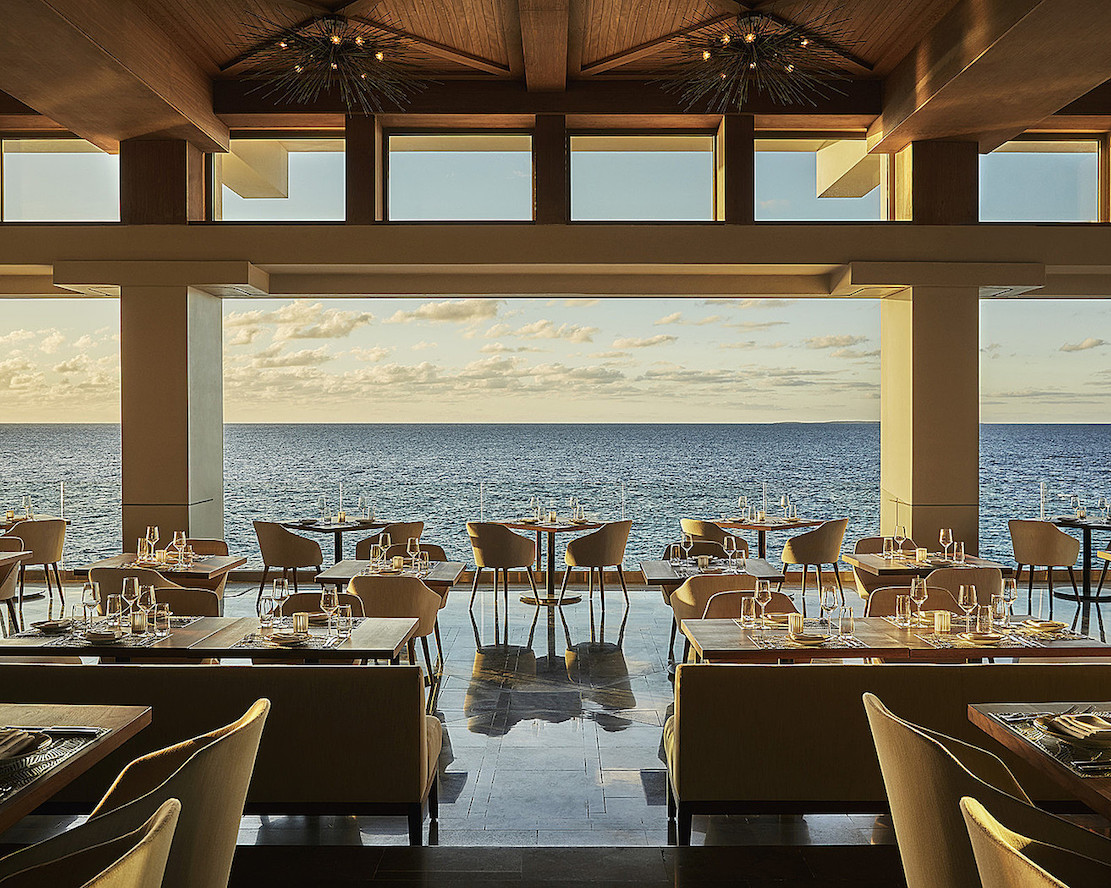 The
resort’s principal restaurant is called Coba (left),
windswept and open to the sea, serving a menu by
Chef George Reid, with some of the best seafood I
had on Anguilla, including local red snapper
($36), spiny lobster ($46 per pound), and crayfish
($30), along with silky, char-grilled octopus with
an aïoli, capers and hot spicing. You may
well enjoy these simply grilled, but there are
also eight different sauces you can add. The
Parker House rolls are addictively good. For
dessert go with the Key lime tart and the crème
brûlée. Breakfast
is also served at Coba, but be aware it is not
complimentary with the room charge but a whopping
surcharge of $36 plus 15% service charge.
The
resort’s principal restaurant is called Coba (left),
windswept and open to the sea, serving a menu by
Chef George Reid, with some of the best seafood I
had on Anguilla, including local red snapper
($36), spiny lobster ($46 per pound), and crayfish
($30), along with silky, char-grilled octopus with
an aïoli, capers and hot spicing. You may
well enjoy these simply grilled, but there are
also eight different sauces you can add. The
Parker House rolls are addictively good. For
dessert go with the Key lime tart and the crème
brûlée. Breakfast
is also served at Coba, but be aware it is not
complimentary with the room charge but a whopping
surcharge of $36 plus 15% service charge.
I didn’t stay at the newly
refurbished
Malliouhana,
an Auberge Resort which opened in 1984, set above
rocky beach crags and ultramarine waters. I did,
however, enjoy Chef Marc Alvarez’s Caribbean menu
at The
Restaurant there (below), which impressed me most
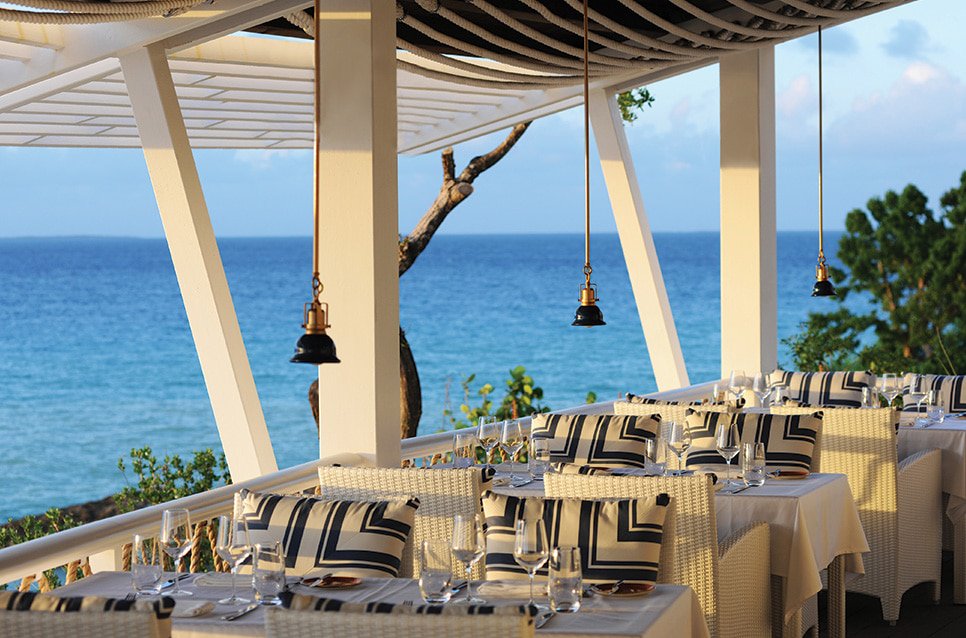 for the
exquisite quality of the raw seafood, like conch
and watermelon ceviche with spicy popcorn and
cilantro ($14) and the mahi-mahi ceviche with lime
and chile leche
de tigre marinade and cassava chips ($14).
Grilled octopus was excellent, too, served with
yucca, heirloom chickpeas and a crumble of chorizo
($18).
for the
exquisite quality of the raw seafood, like conch
and watermelon ceviche with spicy popcorn and
cilantro ($14) and the mahi-mahi ceviche with lime
and chile leche
de tigre marinade and cassava chips ($14).
Grilled octopus was excellent, too, served with
yucca, heirloom chickpeas and a crumble of chorizo
($18).
Among
my favorite entrees was a pan-roasted snapper (left) with
crisp bok choy, shrimp and plantains, and curry
coconut emulsion ($37). A good choice is sake-marinated
and grilled ahi tuna with quinoa, braised greens
and a spicy wasabi-soy vinaigrette ($37). Triggerfish
and spiny lobster were on the printed menu but not
available that evening, which points back to the
availability problem of seafood on the island and
how the chef here won’t serve what is not
freshest. For dessert you’ll like the apple and
strawberry shortcake. Service was dismayingly slow
throughout an evening with very few tables taken.
The Restaurant has a first-rate wine list.
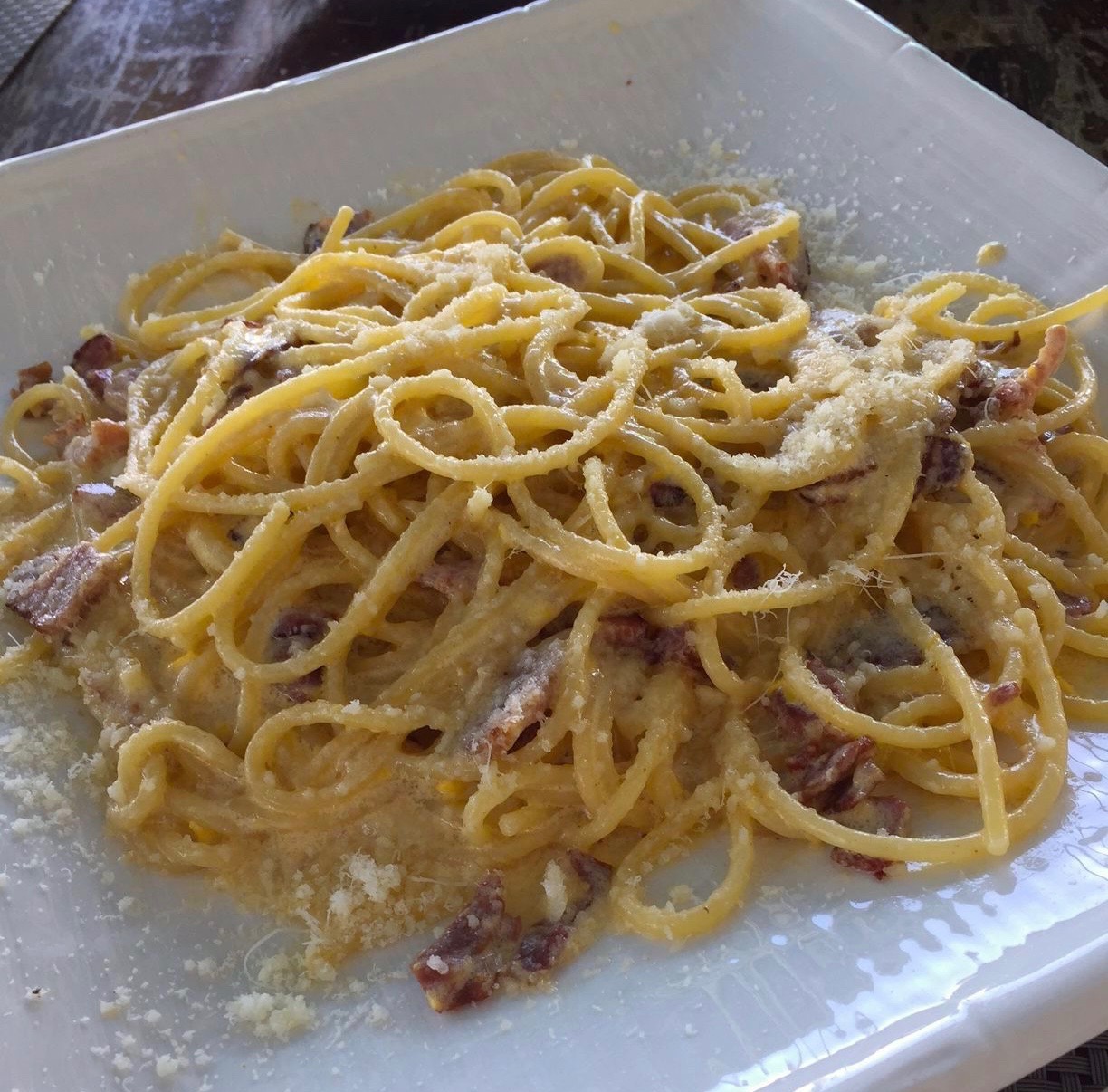
Italian food of quality and
authenticity is not that easy to come by on
Anguilla, but Italia
at the CuisinArt
Golf & Spa Resort impressed me on both
counts, although here, too, service was as slow as
any I’ve experienced in the Caribbean. (We
waited 40 minutes for three pasta dishes.) Fortunately,
Chef Biaggia Lungo, from Sorrento, is very serious
about his food, so bucatini alla
carbonara (right), lasagna
alla bolognese, and agnolottti
stuffed with pumpkin in a butter and sage sauce
were all delicious. The wine list is modest, and
the Italian bottlings all too familiar. You
need not bother with the hum-drum desserts. Note
that CuisinArt’s website says that a new menu will
be in place November 1, so take my comments in the
context of my springtime meal.
 Blanchard’s
(below), which is unassociated with a
resort, is on Meads Bay and has long been one of
the upscale favorites of both transient visitors
and local property owners, not least for its
daunting array of shelves stocked with rums from
all over the Caribbean, and tasting flights—a good
idea with dessert—are certainly encouraged. The
wine list has more than 500 selections; the
average wine by the glass is $15, with a dozen
half-bottles, and mark-ups are among the more
reasonable I found on the island. Bob and
Melinda (she’s
the chef) Blanchard have run this colorful,
cordial restaurant since 1994, and the ambiance on
the dining patio, surrounded by a thicket of
tropical greenery, has always been at its best at
sunset.
Blanchard’s
(below), which is unassociated with a
resort, is on Meads Bay and has long been one of
the upscale favorites of both transient visitors
and local property owners, not least for its
daunting array of shelves stocked with rums from
all over the Caribbean, and tasting flights—a good
idea with dessert—are certainly encouraged. The
wine list has more than 500 selections; the
average wine by the glass is $15, with a dozen
half-bottles, and mark-ups are among the more
reasonable I found on the island. Bob and
Melinda (she’s
the chef) Blanchard have run this colorful,
cordial restaurant since 1994, and the ambiance on
the dining patio, surrounded by a thicket of
tropical greenery, has always been at its best at
sunset.
Our dinner’s highlights
included corn chowder with vegetables ($16) and pappardelle
pasta with the meat of pulled short ribs, olives,
zucchini, peas and roast tomato ragôut (though at
$38 a high price). Sesame-crusted mahi-mahi
with curried rice, caramelized onion, Saigon stir
fry and Dijon caper sauce ($46) was all right, if
overwrought.
There is also a three-course menu at $49
(plus 15% service charge).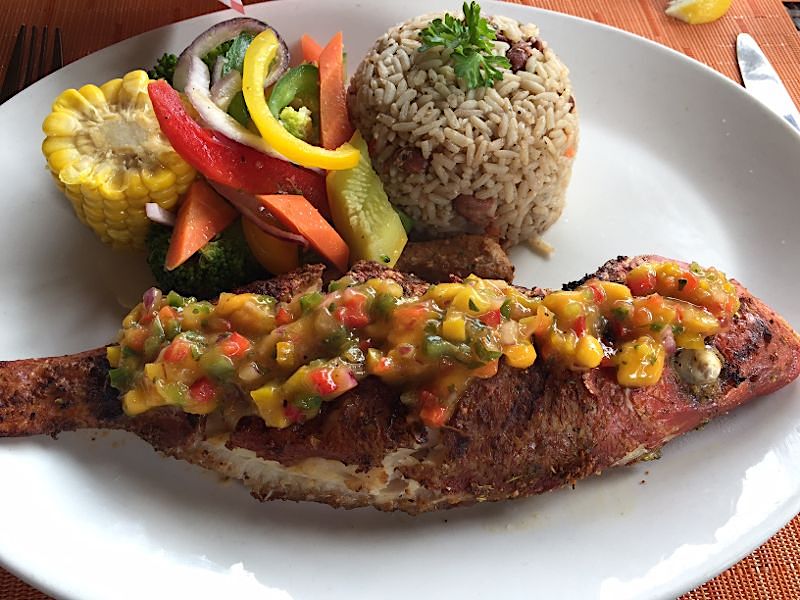
Prototypically Caribbean for
its outdoor location—an afternoon shower broke out
and soaked the patio tables while we were having
lunch, which was not in the least disturbing in
such a setting—is da’Vida’s outdoor restaurant,
Bayside, which complements its more staid indoor
restaurant open for dinner.
The first thing to know about
is the basket of johnnycakes ($2), like cornmeal
bagels and absolutely addictive. This is a family
place, popular after a swim or sun-bake. So
there’s pizza and burgers. The grilled fish with
Creole sauce ($25; right) is dependable if a little
pricey. Do
share a warm brownie with ice cream ($8) or a very
good carrot cake for dessert ($8). An ice cold beer goes
best with this kind of food and sun.
❖❖❖
By John Mariani
Photos by Milica Koceva.
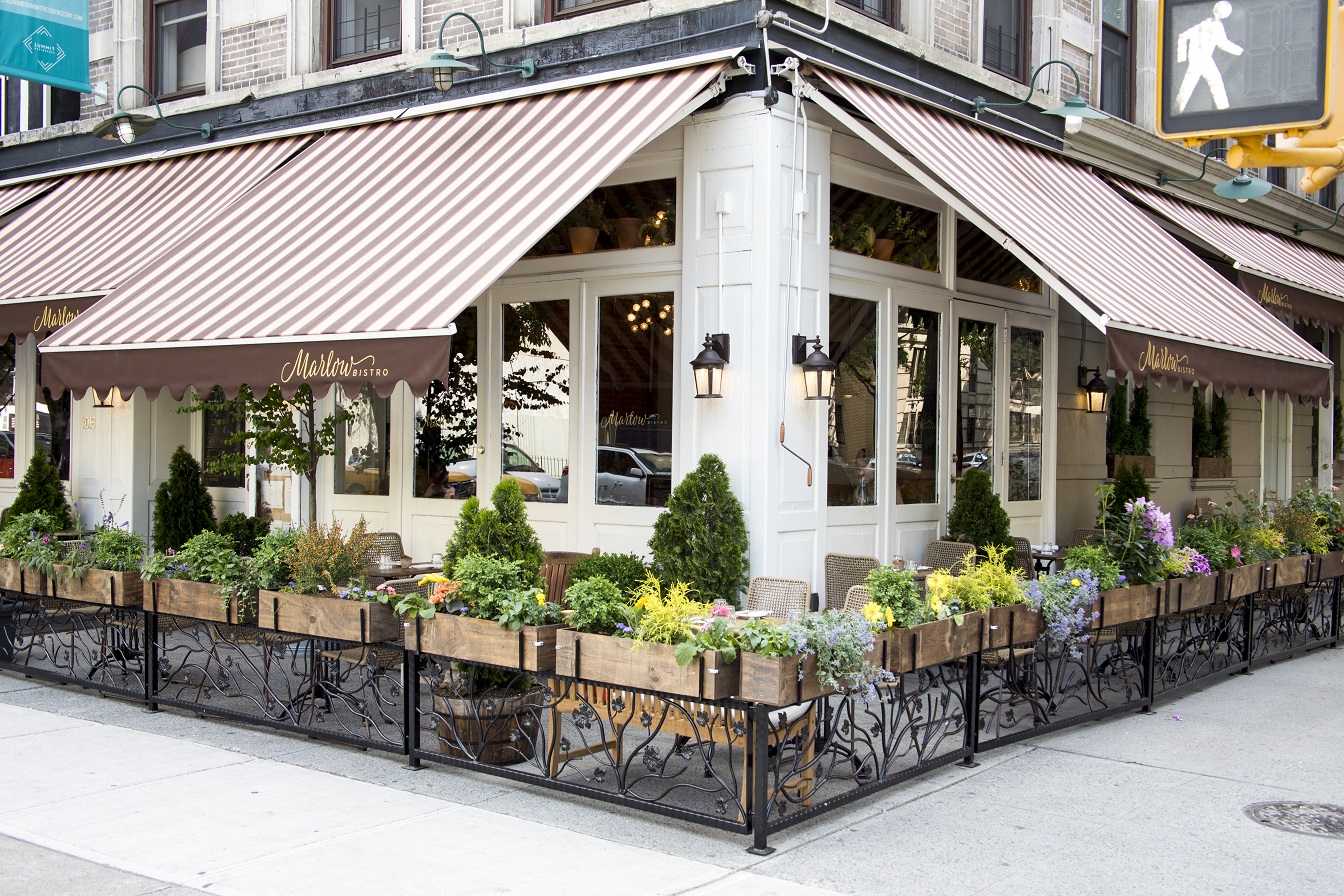 MARLOW
BISTRO
MARLOW
BISTRO
1018
Amsterdam Avenue (near 109th
Street)
212-662-9020
When I was in
grad school at Columbia University in Harlem,
the only real options for lunch or dinner were
a very high-end continental restaurant called
The Terrace atop a dormitory and a little
Hungarian restaurant that had more charm than
good food.
Now, with another Harlem Renaissance in
full swing, the neighborhood west of
Morningside Park has a remarkable array of new
restaurants of every stripe,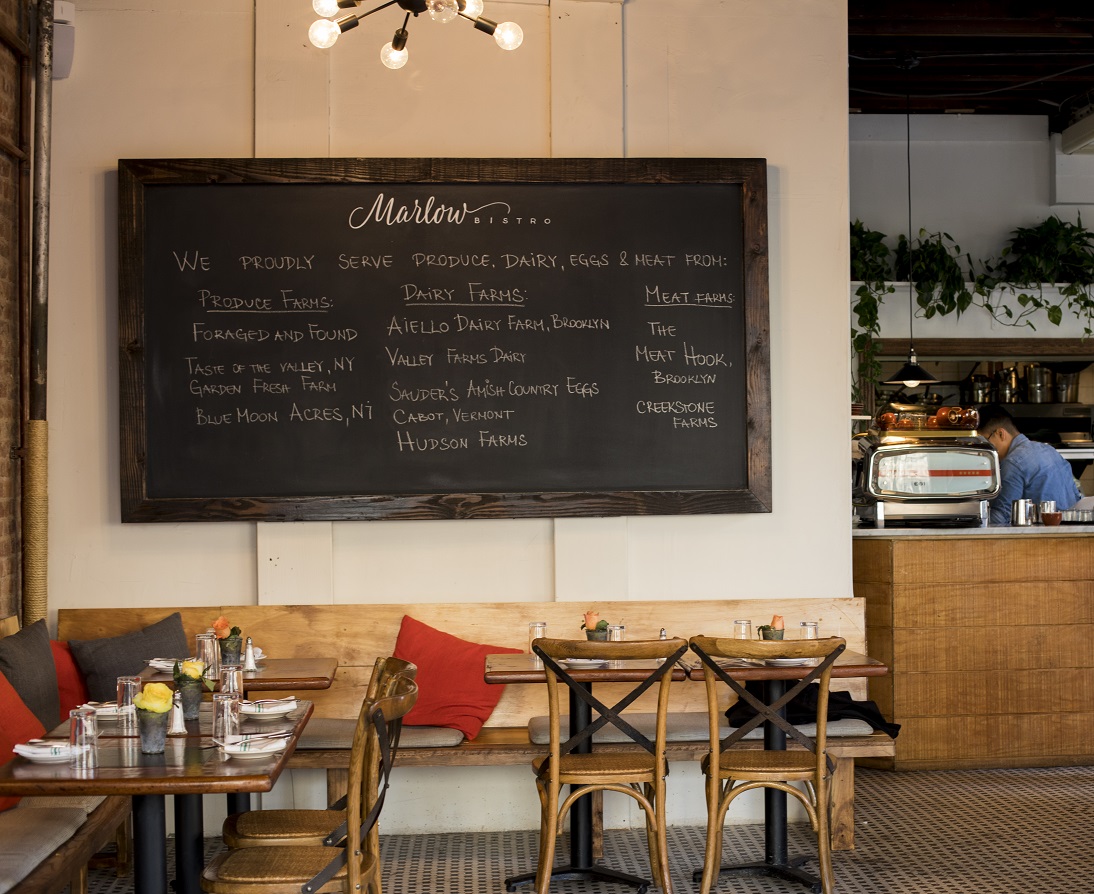 and
the eight-month-old Marlow Bistro is one of
the best recent arrivals. Owners Marjanne
Motamedi and Dragan Ristovski have gotten the
mix just right in both menu and décor for this
quickly gentrifying area.
and
the eight-month-old Marlow Bistro is one of
the best recent arrivals. Owners Marjanne
Motamedi and Dragan Ristovski have gotten the
mix just right in both menu and décor for this
quickly gentrifying area.
For one thing, with its white
façade, wide windows, and tables outside with
flower boxes set on broad Amsterdam Avenue in
full view of the magnificent Cathedral of St.
John the Divine, the restaurant has a capital
location.
Inside it has a rough-hewn look of brick
walls, wood-beamed ceiling, and industrial light
fixtures, with a bar to one side. The
room could certainly use some sound-proofing,
and there’s no reason to turn down the lights
when the sun goes down. The
crowd is largely neighborhood and university
people and a cadre of Millenials, so dress is
casual, without anyone dressing sloppily,
though. Cloth
napkins would be nicer than paper.
(By the
way the attractive young service staff, many
from eastern Europe, are as affable as you’d
hope, at least until they drift out of the
dining room at nine o’clock and need to be
flagged down.)
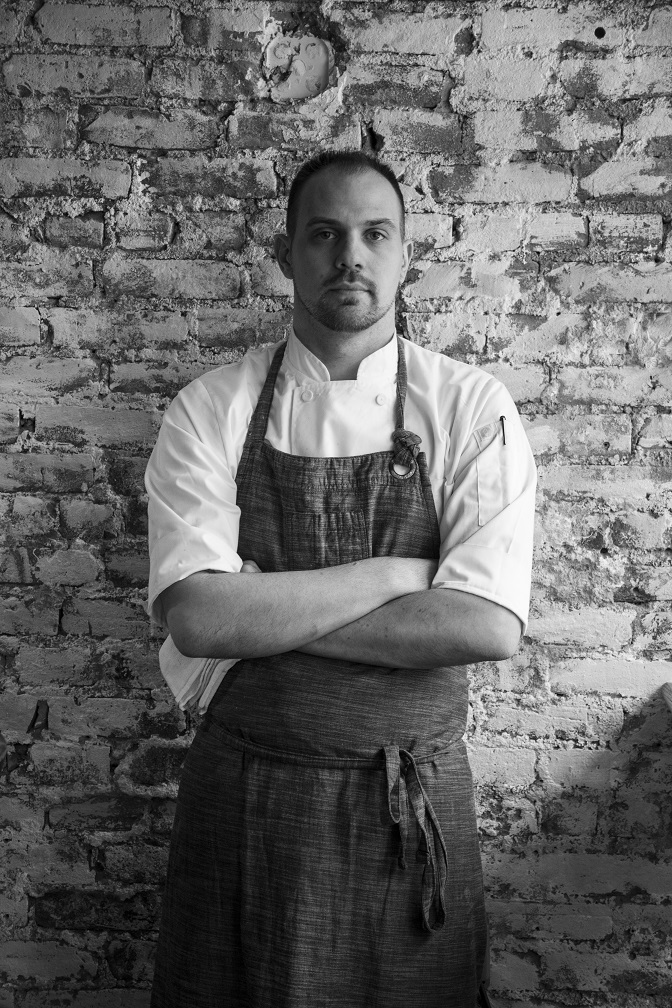 Belgrade-born
Executive Chef Zivko Radojcic (left) has
worked in fine dining spots like Picholine, the
Korean eatery Jungsik, and Alta, from which he’s
drawn a lot of the Mediterranean flavors for his
menu at Marlow.
He lists his farm sources on a
blackboard—wild mushrooms from Foraged &
Found Edibles, seasonal vegetables, fruits and
meats from Local Bushel Farm, organic specialty
greens from Blue Moon Acres, and organic eggs
from Sauder's Amish Country Eggs. Their quality
shows in Radojcic’s cooking, whose imagination
and range is well-suited to the size of his
kitchen and 50-seat dining room.
Belgrade-born
Executive Chef Zivko Radojcic (left) has
worked in fine dining spots like Picholine, the
Korean eatery Jungsik, and Alta, from which he’s
drawn a lot of the Mediterranean flavors for his
menu at Marlow.
He lists his farm sources on a
blackboard—wild mushrooms from Foraged &
Found Edibles, seasonal vegetables, fruits and
meats from Local Bushel Farm, organic specialty
greens from Blue Moon Acres, and organic eggs
from Sauder's Amish Country Eggs. Their quality
shows in Radojcic’s cooking, whose imagination
and range is well-suited to the size of his
kitchen and 50-seat dining room.
The Mediterranean slant is fully
realized in a dish of very tender octopus (below) with
French beans, cherry tomatoes that add sweetness
and acid, olives and a lovely lemon-potato foam
($17). When
you have great ingredients no improvement need
be made to a dish of summer squash, basil feta
cheese and babaganoush ($15).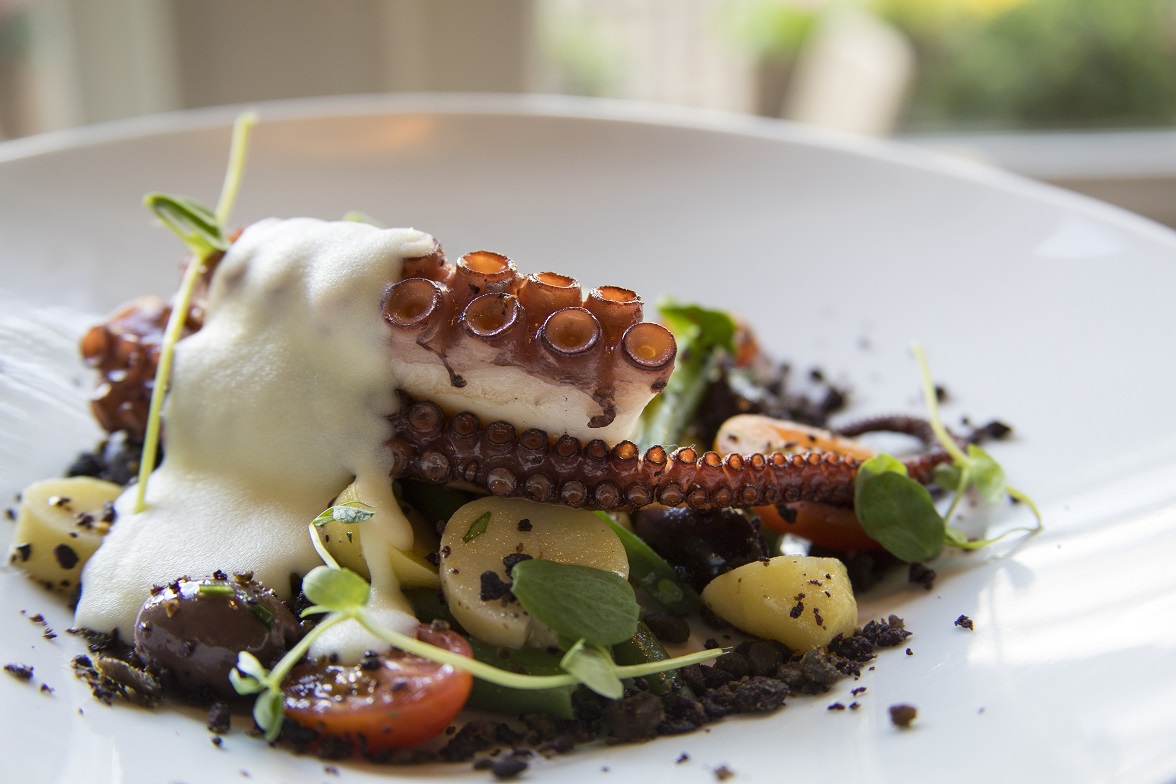
There are five pastas, every
one carefully thought through and each out of
the ordinary.
Ricotta cavatelli (below)
comes with asparagus, cherry tomatoes, ramps pesto and
pickled rhubarb ($19), while spinach-rich girasoli
with sunchoke cream and a mushroom fricassee is
a fine, bright idea ($20).
“Chicken duo” sounds pedestrian but is actually
a splendid mix of different parts of the
bird—breast rolled with a brown butter mousse
and legs stuffed with a porcini puree and
asparagus, all graced with a glistening creamy
parsnip puree, wild mushrooms, brown butter
Béarnaise and brown butter crumbs (at a very
reasonable $25).
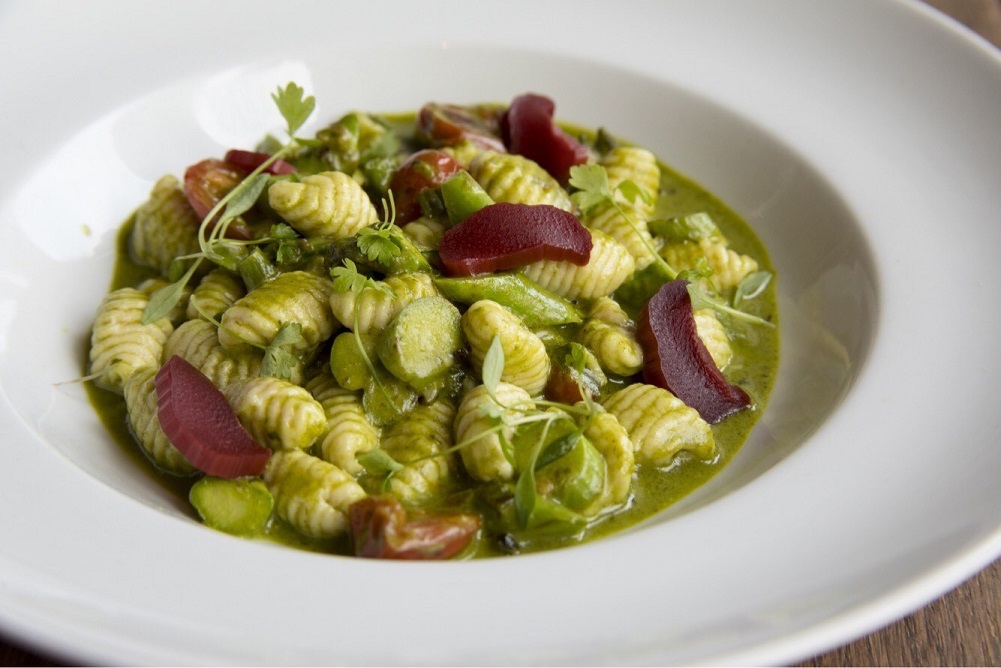 You
certainly expect a spot like Marlow to have a
good burger and the addition of a roasted pepper
spread, coleslaw and paprika potato ($18) atop a
delicious ground beef blend shows Radojcic’s
ability to make a burger his own.
You
certainly expect a spot like Marlow to have a
good burger and the addition of a roasted pepper
spread, coleslaw and paprika potato ($18) atop a
delicious ground beef blend shows Radojcic’s
ability to make a burger his own.
Foie
gras “rocher”
($15) needs re-thinking: cherry puree, cocoa
granola and white chocolate powder is a
modernist turn I’ve seen before—the first time
at London’s Fat Duck, where I was served
near-raw squab with a melted Cadbury chocolate
bar on top.
Not a great idea.
And I don’t know
why, in a town where everybody does it, a
restaurant called Marlow Bistro is serving
flaccid, flavorless pizza.
It is a sign of our
times that small restaurants transcend the
obvious when it comes to dessert, so Marlow’s
crème fraîche pannacotta
with strawberries, aged balsamic, and Brown
butter ($9) and something called volcano Edna
with mascarpone moose, coffee granola and
chocolate lava ($9), which taste like one of the
best tiramisùs
in New York, are good choices, as is a chocolate
hazelnut parfait with passion fruit diplomat
bread, and white chocolate snow ($10). Here
the kitchen’s fancy shows well.
I wish I’d had a place like Marlow set
just where it is in this neighborhood when I was
a student. Back then, it would have been a place
well worth saving up for to take a girl out for
a good meal.
Marlow Bistro is open for lunch Mon.-Fri. and dinner nightly; Brunch Sat. & Sun.
❖❖❖
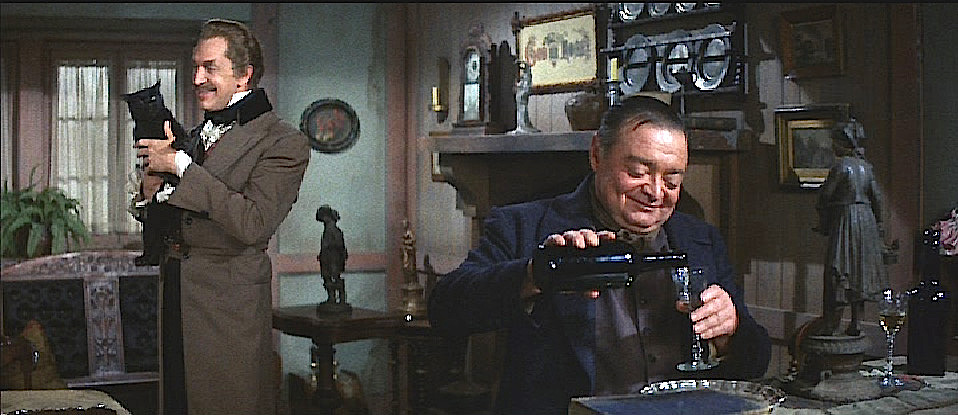 WHAT I'M DRINKING NOW
WHAT I'M DRINKING NOWBy John Mariani
Pieve Santa Restituta
Brunello di Montalcino 2011 ($78)—Brunellos used to take a long,
long time to mature, and there is still a good
case to be made for that style, but, upon release,
contemporary versions can have their charm. This
example, from Gaja,
is not from a single vineyard but is a
blend from the estate’s top growing sites in
Sugarille, Santo Pietro, Castagno, and Pian dei
Cerri. It
spent 12 months in barrique and 12
months in
botti (large thirty-year-old casks). I’d
certainly wait for this 2011 to come around, but
it’s worth sampling this year and seeing how it
develops.
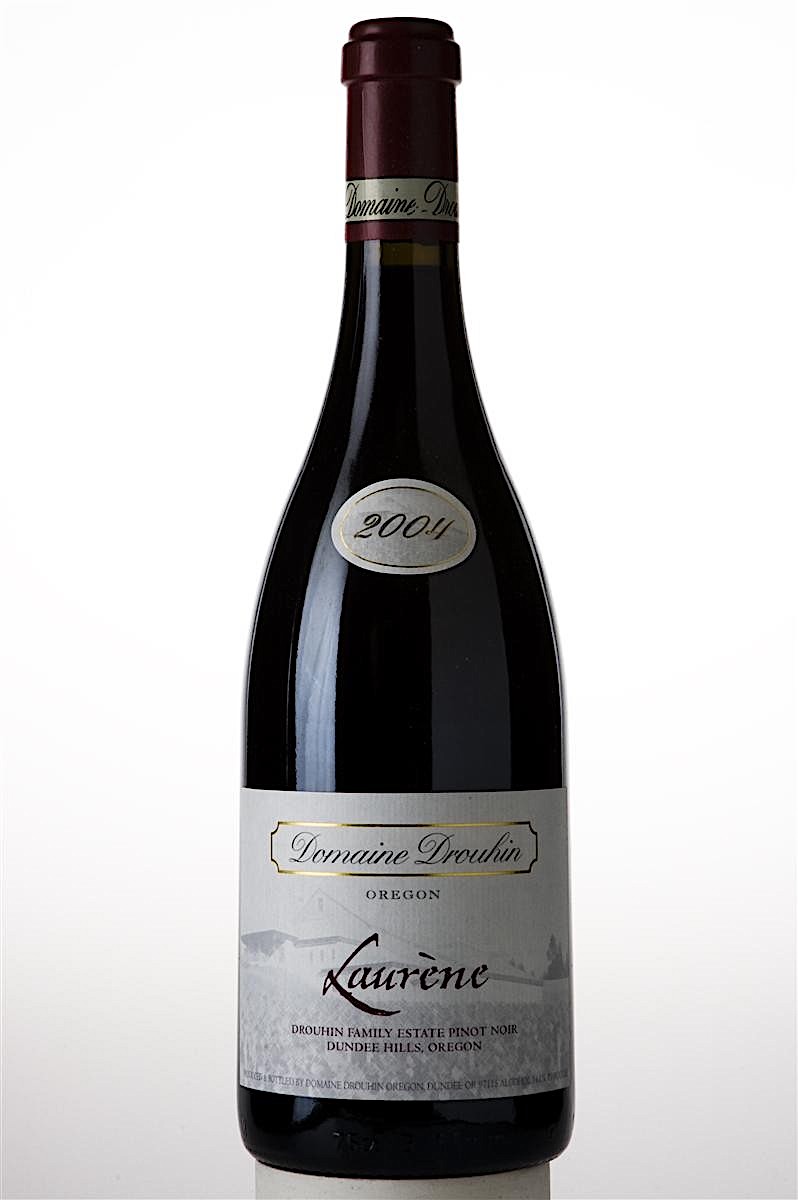 Domaine
Drouhin Laurene Pinot Noir 2004 ($150)--I can't say
I have much experience with 13-year-old Oregon
Pinot Noirs, but given the provenance of this
wonderful example, from Burgundy producer Joseph
Drouhin, which was the first French company to see
the possibilities in Oregon many year ago, I'm not
at all surprised that it has held up as well as a
fine Burgundy. It is a flagship cuvée (named after
Véronique Drouhin's eldest daughter) from the best
wine produced in a vintage from 32 different
blocks in the Dundee Hills. Drouhin says
2004 had an ideal growing season but low yield,
spending 20 months in barrel before release in
2009. Now in its second decade it proves the
potential for Pinot Noir from the Pacific
Northwest and should be a standard others should
try to meet. By the way, the current 2014 vintage
is out and costs about $75.
Domaine
Drouhin Laurene Pinot Noir 2004 ($150)--I can't say
I have much experience with 13-year-old Oregon
Pinot Noirs, but given the provenance of this
wonderful example, from Burgundy producer Joseph
Drouhin, which was the first French company to see
the possibilities in Oregon many year ago, I'm not
at all surprised that it has held up as well as a
fine Burgundy. It is a flagship cuvée (named after
Véronique Drouhin's eldest daughter) from the best
wine produced in a vintage from 32 different
blocks in the Dundee Hills. Drouhin says
2004 had an ideal growing season but low yield,
spending 20 months in barrel before release in
2009. Now in its second decade it proves the
potential for Pinot Noir from the Pacific
Northwest and should be a standard others should
try to meet. By the way, the current 2014 vintage
is out and costs about $75.
Alain Graillot Crozes-Hermitage
2015 ($32)—Another style of Rhȏne
wine, this from a very young—1985—domaine, where
grapes are harvested by hand and the wines are
aged in old Burgundy barrels. Graillot
is highly regarded among his colleagues in the
Northern Rhȏne for the balance he achieves in his
wines, so this is a red with plenty of flexibility
when it comes to summer foods off the grill.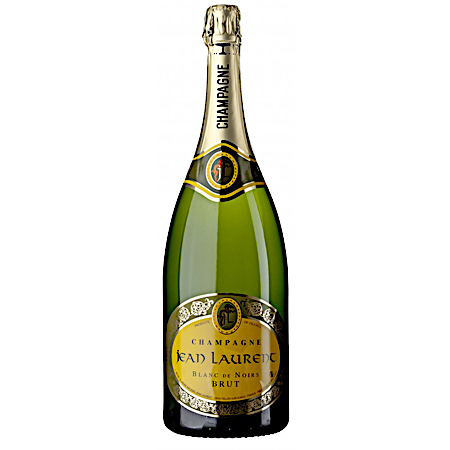
Champagne Jean Laurent Blanc de
Noirs Brut ($40)—Champagne, at least
non-vintage, of real quality need not cost a
fortune, as this lovely, full-fruited example
proves. You
can readily find it—when you
can find it—for less than $40, and it’s a real
crowd pleaser, especially as an aperitif or a wine
to go with poached fish.
Viticcio Prunaio Chianti Classico
Gran Selezione 2013 ($24)—The producer calls this “A
Chianti Classico made unexpectedly in Super Tuscan
style,” which apparently means no other
traditional grapes were used in the blend, only
Sangiovese Grosso selected clones, as in a
Brunello or Vino Nobile. So does it qualify as a
Chianti Classico?
The laws have been so bent in recent years
that it’s hard not to be whatever a winery says it
is. Nevertheless,
this is a fine red Tuscan wine by any name, aged
in barriques
for 18 months and then large barrels for six.
Alcohol is 14%.
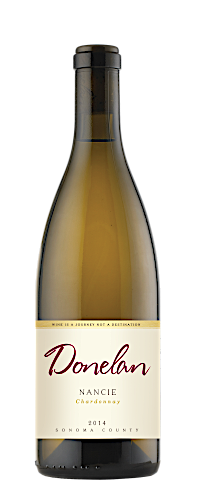 Donelan Nancie
Chardonnay 2014 ($48)—Producer Joe Donelan names
this after his mother, Nancie, and it is made from
grapes from three vineyards, one from Russian
River using 30-year-old vines. Ten
months of aging in new oak and three years of age
before release might seem to make the wine too
woody, but there is a good amount of fruit and
acid to make it a nice clean California-style
Chardonnay, good to go with seafood of any kind.
Donelan Nancie
Chardonnay 2014 ($48)—Producer Joe Donelan names
this after his mother, Nancie, and it is made from
grapes from three vineyards, one from Russian
River using 30-year-old vines. Ten
months of aging in new oak and three years of age
before release might seem to make the wine too
woody, but there is a good amount of fruit and
acid to make it a nice clean California-style
Chardonnay, good to go with seafood of any kind.
Votre Santé Pinot Noir 2015 ($18)—Don’t be fooled by the
French name; this is an Anderson Valley
appellation Pinot Noir but made as close as
possible to a Burgundy style, with only 13.4%
alcohol. It
spends 9 months in French oak and 30% in new oak,
and wine maker François Cordesse (he’s definitely
French) does not filter his Pinot Noir—tricky
business for this finicky grape—so without upping
the alcohol he gets good body and tannin with some
varied spicy notes, ideal for lamb dishes. By the
way, this is one of Francis Ford Coppola’s many
wine lines, this one paying tribute to his
grandmother, Maria Zasa.
Mount Veeder Reserve 2013 ($100)—The label calls this
Bordeaux-style blend “red wine,” which sounds like
something of an injustice at a $100 price tag. It’s a
complex and concentrated wine, with 14.5% alcohol,
blended from 85% Cabernet Sauvignon, 9% Merlot, 4%
Cabernet Fran and 2% Malbec. The
vineyards are at high elevation and the harvest
was picked early, so you don’t get the jammy
texture of so many Napa Cabernet blends. I’m not
sure about the statement that “a Mount Veeder
harvest is a Zen-like art of moving across a
three-dimensional chessboard,” but whatever it is,
it works. Bring
out the porterhouse, open the bottle and chant
“Om….”
Mauritson Zinfandel 2014 ($35)—The vineyard was planted
in 1884, so the family has a long history making
Zinfandel at its best. This is a luscious example,
without the
cloying overripeness of so many others, despite a
14.7% alcohol level. You should expect Zins to
have this kind of body, but the harmony of the
fruit and acids is as it should be. It will
take as well to barbecued meats as to roast prime
rib and cheeses.
Dry Creek Vineyard Dry Chenin Blanc
2015 ($13)—What a great price for one of
the most delicious Chenin Blancs out of Sonoma
County! It’s
a grape too many vintners ignore, and even the
better producers make grassy examples. This is
beautifully textured with the fruit abundant,
showing the commitment of Dry Creek Valley, which
has been making this wine since 1972.
 Cobb Pinot Noir 2014 ($80)—Pricey, but a solid effort
that shows the admirable Cobb style that begins
with an effusive bouquet and a lighter-style
lovely Pinot Noir flavor with substantial body
that buoys it right through the long finish. And it
proves that a Pinot Noir at 12.5% alcohol can be
far more enjoyable than those pushed above 14.5%. A
mature Pommard clone, planted in 1998, adds
brightness to the wine. It can age but it’s hard to
pass up right now.
I drank it with black bass done on the
grill and it worked well.
Cobb Pinot Noir 2014 ($80)—Pricey, but a solid effort
that shows the admirable Cobb style that begins
with an effusive bouquet and a lighter-style
lovely Pinot Noir flavor with substantial body
that buoys it right through the long finish. And it
proves that a Pinot Noir at 12.5% alcohol can be
far more enjoyable than those pushed above 14.5%. A
mature Pommard clone, planted in 1998, adds
brightness to the wine. It can age but it’s hard to
pass up right now.
I drank it with black bass done on the
grill and it worked well.
Saint Cosme 2015 ($19)—A pleasing, well-priced
Cȏtes-du-Rhȏne, very creamy but with a big body
and ruby color, from Gigondas, whose winery dates
to two years before Columbus sailed the ocean
blue. It’s made from 70% Grenache, 15% Syrah, 14%
Mourvèdre and 1% Cinsault. The
fact that it’s unfiltered gives it that body in
its youth, and it is a very good wine with pork
dishes.
❖❖❖


THAT’S IT?
“‘We try to
run our kitchens in a decidedly female way,’ says Sarah
Hymanson [of Kismet in LA]. ‘I try to talk about emotion
and give space for processing.’”—Food & Wine
(7/17).
Any of John Mariani's books below may be ordered from amazon.com.
 The
Hound in Heaven (21st Century Lion Books)
is a novella, and for anyone who loves dogs,
Christmas, romance, inspiration, even the supernatural, I
hope you'll find this to be a treasured favorite.
The story concerns how, after a New England teacher,
his wife and their two daughters adopt a stray puppy found
in their barn in northern Maine, their lives seem full of
promise. But when tragedy strikes, their wonderful dog
Lazarus and the spirit of Christmas are the only things
that may bring his master back from the edge of
despair.
The
Hound in Heaven (21st Century Lion Books)
is a novella, and for anyone who loves dogs,
Christmas, romance, inspiration, even the supernatural, I
hope you'll find this to be a treasured favorite.
The story concerns how, after a New England teacher,
his wife and their two daughters adopt a stray puppy found
in their barn in northern Maine, their lives seem full of
promise. But when tragedy strikes, their wonderful dog
Lazarus and the spirit of Christmas are the only things
that may bring his master back from the edge of
despair. WATCH THE VIDEO!
“What a huge surprise turn this story took! I was completely stunned! I truly enjoyed this book and its message.” – Actress Ali MacGraw
“He had me at Page One. The amount of heart, human insight, soul searching, and deft literary strength that John Mariani pours into this airtight novella is vertigo-inducing. Perhaps ‘wow’ would be the best comment.” – James Dalessandro, author of Bohemian Heart and 1906.
“John Mariani’s Hound in Heaven starts with a well-painted portrayal of an American family, along with the requisite dog. A surprise event flips the action of the novel and captures us for a voyage leading to a hopeful and heart-warming message. A page turning, one sitting read, it’s the perfect antidote for the winter and promotion of holiday celebration.” – Ann Pearlman, author of The Christmas Cookie Club and A Gift for my Sister.
“John Mariani’s concise, achingly beautiful novella pulls a literary rabbit out of a hat – a mash-up of the cosmic and the intimate, the tragic and the heart-warming – a Christmas tale for all ages, and all faiths. Read it to your children, read it to yourself… but read it. Early and often. Highly recommended.” – Jay Bonansinga, New York Times bestselling author of Pinkerton’s War, The Sinking of The Eastland, and The Walking Dead: The Road To Woodbury.
“Amazing things happen when you open your heart to an animal. The Hound in Heaven delivers a powerful story of healing that is forged in the spiritual relationship between a man and his best friend. The book brings a message of hope that can enrich our images of family, love, and loss.” – Dr. Barbara Royal, author of The Royal Treatment.
 |
The Encyclopedia of American Food and Drink by John F. Mariani (Bloomsbury USA, $35) Modesty forbids me to praise my own new book, but let me proudly say that it is an extensive revision of the 4th edition that appeared more than a decade ago, before locavores, molecular cuisine, modernist cuisine, the Food Network and so much more, now included. Word origins have been completely updated, as have per capita consumption and production stats. Most important, for the first time since publication in the 1980s, the book includes more than 100 biographies of Americans who have changed the way we cook, eat and drink -- from Fannie Farmer and Julia Child to Robert Mondavi and Thomas Keller. "This book is amazing! It has entries for everything from `abalone' to `zwieback,' plus more than 500 recipes for classic American dishes and drinks."--Devra First, The Boston Globe. "Much needed in any kitchen library."--Bon Appetit. |
"Eating Italian will never be the same after reading John Mariani's entertaining and savory gastronomical history of the cuisine of Italy and how it won over appetites worldwide. . . . This book is such a tasteful narrative that it will literally make you hungry for Italian food and arouse your appetite for gastronomical history."--Don Oldenburg, USA Today. "Italian
restaurants--some good, some glitzy--far
outnumber their French rivals. Many of
these establishments are zestfully described
in How Italian Food Conquered the World, an
entertaining and fact-filled chronicle by
food-and-wine correspondent John F.
Mariani."--Aram Bakshian Jr., Wall Street
Journal.
"Equal parts
history, sociology, gastronomy, and just
plain fun, How Italian Food Conquered the
World tells the captivating and delicious
story of the (let's face it) everybody's
favorite cuisine with clarity, verve and
more than one surprise."--Colman Andrews,
editorial director of The Daily
Meal.com. "A fantastic and fascinating
read, covering everything from the influence
of Venice's spice trade to the impact of
Italian immigrants in America and the
evolution of alta cucina. This book will
serve as a terrific resource to anyone
interested in the real story of Italian
food."--Mary Ann Esposito, host of PBS-TV's
Ciao
Italia. "John Mariani has written the
definitive history of how Italians won their
way into our hearts, minds, and
stomachs. It's a story of pleasure over
pomp and taste over technique."--Danny Meyer,
owner of NYC restaurants Union Square
Cafe, The Modern, and Maialino.
|
 |
 |
 |
 |
 |
 |
 |
 |
 Everett Potter's Travel Report:
Everett Potter's Travel Report: 
 Eating Las Vegas
JOHN CURTAS has been covering the Las Vegas
food and restaurant scene since 1995. He is
the co-author of EATING LAS VEGAS – The 50
Essential Restaurants (as well as
the author of the Eating Las Vegas web site: www.eatinglasvegas.
He can also be seen every Friday morning as
the “resident foodie” for Wake Up With the
Wagners on KSNV TV (NBC) Channel 3 in
Las Vegas.
Eating Las Vegas
JOHN CURTAS has been covering the Las Vegas
food and restaurant scene since 1995. He is
the co-author of EATING LAS VEGAS – The 50
Essential Restaurants (as well as
the author of the Eating Las Vegas web site: www.eatinglasvegas.
He can also be seen every Friday morning as
the “resident foodie” for Wake Up With the
Wagners on KSNV TV (NBC) Channel 3 in
Las Vegas.

MARIANI'S VIRTUAL GOURMET
NEWSLETTER is published weekly. Editor/Publisher: John
Mariani.
Editor: Walter Bagley. Contributing Writers: Christopher Mariani,
Robert Mariani, Misha Mariani, John A. Curtas, Geoff Kalish, Mort
Hochstein, and
Brian Freedman. Contributing Photographer: Galina
Dargery. Technical Advisor: Gerry McLoughlin.
To un-subscribe from this newsletter,click here.
© copyright John Mariani 2017

